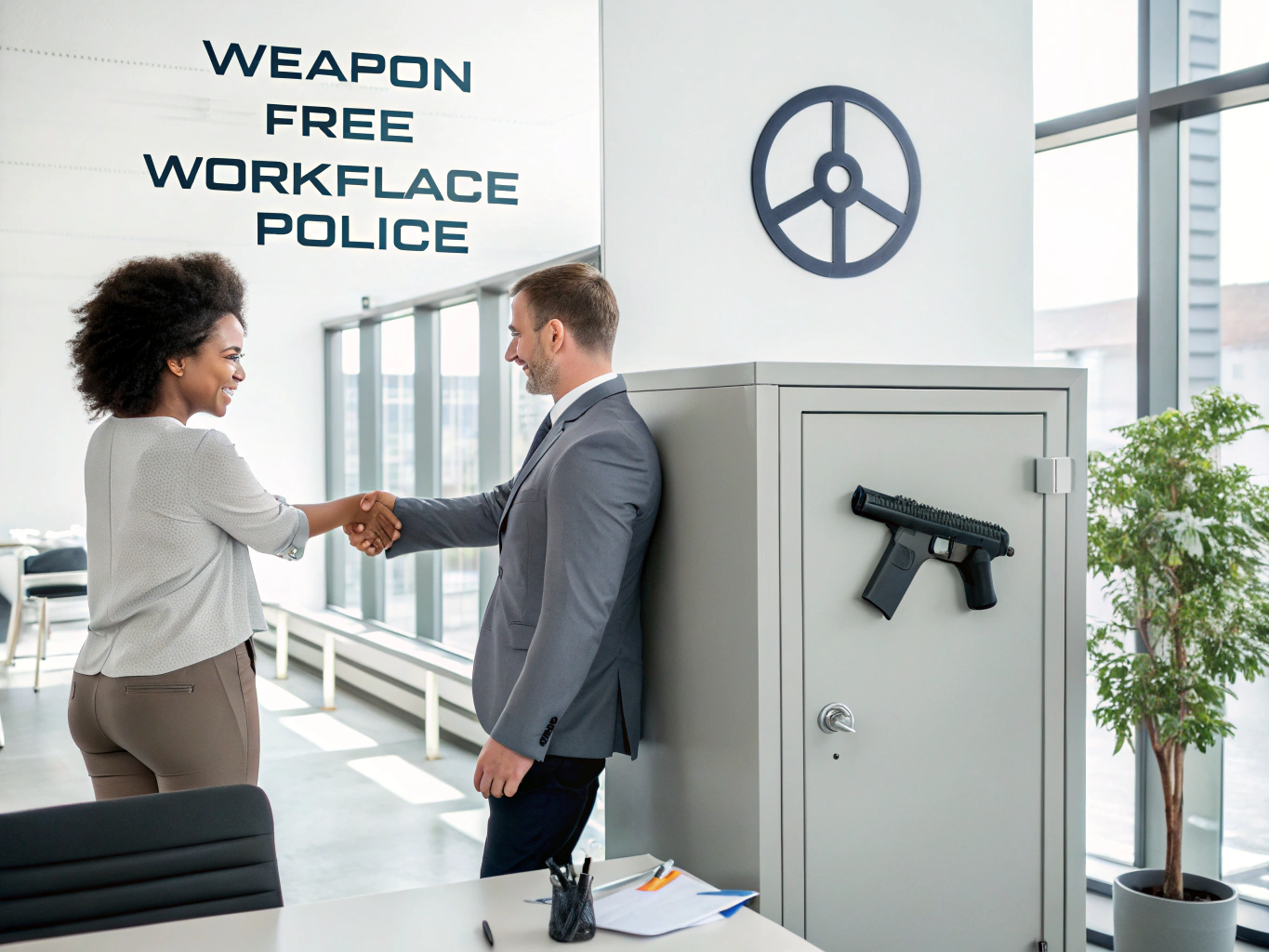Definition
A Weapon-Free Workplace Policy is a proactive measure designed to create a safe environment by prohibiting the possession and use of weapons within company premises. This policy aims to protect employees, visitors, and contractors from potential threats, fostering a culture of safety and security in the workplace.
Key Components
When crafting a Weapon-Free Workplace Policy, several essential elements should be included to ensure clarity and effectiveness. Here’s a closer look at the key components that you might consider incorporating:
- Prohibited Weapons: Clearly define what constitutes a weapon within your organization. This typically includes firearms, knives, explosives, and any items deemed dangerous. For instance, if you have a policy against firearms, it’s vital to specify that this includes both open and concealed carry.
- Exceptions: Identify any exceptions to the policy, such as authorized law enforcement or security personnel who may need to carry weapons for safety purposes. Make sure these exceptions are well-defined to prevent confusion.
- Consequences of Violation: Outline the repercussions for violating the policy. This could range from disciplinary action to termination of employment. For example, if an employee is found with a weapon, it’s crucial to communicate that this could lead to severe consequences.
- Reporting Mechanisms: Encourage employees to report any concerns regarding weapons in the workplace. Providing a clear reporting structure helps create an atmosphere of trust and safety. For instance, you might have a confidential reporting line where employees can express their concerns without fear of retaliation.
- Education & Training: Implement training sessions to ensure that all employees understand the policy and its importance. Consider role-playing scenarios where employees can practice how to respond if they encounter a weapon in the workplace.
- Visible Signage: Post signage that indicates your workplace is a weapon-free zone. This serves as a constant reminder for employees and visitors alike, reinforcing the commitment to safety.
Importance in the Workplace
Having a Weapon-Free Workplace Policy is crucial in today’s environment, where workplace violence can occur unexpectedly. This policy not only mitigates risks but also promotes a sense of security among employees. Imagine a scenario where an employee feels anxious about attending work due to concerns about safety; a strong policy can alleviate those fears and encourage a more focused and productive workplace.
Additionally, in high-stress environments, knowing that there are strict guidelines regarding weapons can lead to a more harmonious work atmosphere. It fosters trust among staff and assures them that their well-being is a top priority, which can significantly boost morale and productivity.
Best Practices
Implementing a robust Weapon-Free Workplace Policy requires thoughtful planning and execution. Here are some best practices to guide you:
- Conduct Regular Reviews: Make it a practice to review your policy annually to ensure it remains relevant and effective. Engage employees in the review process to gather feedback and address any concerns they may have.
- Communicate Clearly: Ensure that the policy is easily accessible and communicated clearly to all employees. Use various communication channels, such as emails, team meetings, and company intranet, to reinforce the message.
- Incorporate Training Sessions: Provide regular training on conflict resolution, de-escalation techniques, and the specifics of the weapon-free policy. This equips employees with tools to handle potential threats effectively.
- Encourage a Culture of Vigilance: Foster an environment where employees feel empowered to speak up about safety concerns. This could involve creating a safety committee that meets regularly to discuss workplace safety and share insights.
- Utilize Technology: Consider implementing security measures such as surveillance cameras or security personnel to monitor the premises. These technologies can serve as a deterrent and enhance the overall safety of the workplace.
Legal Considerations
When implementing a Weapon-Free Workplace Policy, it’s essential to be aware of the legal landscape surrounding workplace safety. Ensure that your policy complies with local, state, and federal laws regarding the possession of weapons. For example, some states have specific laws about carrying firearms in public spaces, including workplaces.
Additionally, it’s wise to consult with legal professionals to draft your policy. This helps ensure that it is enforceable and respects the rights of employees while prioritizing safety. Document all procedures, training, and communications related to the policy, as this can be critical in legal situations.
Conclusion
Understanding and implementing a Weapon-Free Workplace Policy is vital for fostering a safe and productive work environment. By taking proactive steps to establish clear guidelines and promoting a culture of safety, you can significantly reduce risks associated with workplace violence. Remember, a safe workplace is not just about compliance; it’s about caring for your employees and creating a space where they can thrive. So, take the time to invest in this policy—it’s a commitment to the well-being of everyone in your organization.




